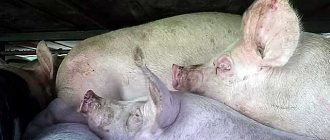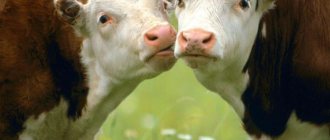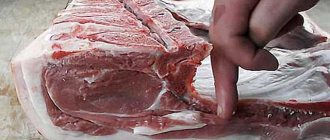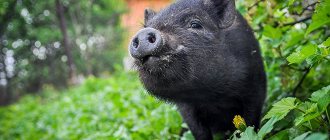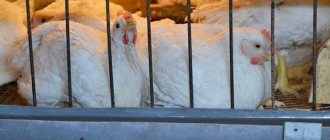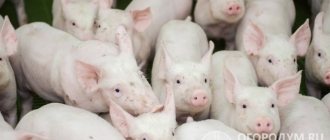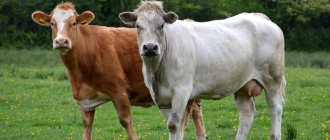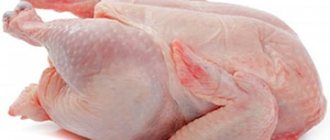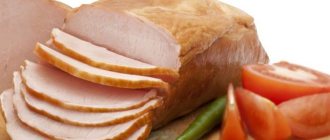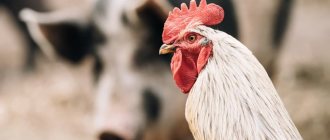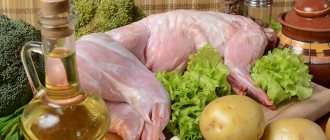How to determine the weight of a pig without weighing is by no means an idle question, especially for the owner of a private farmstead. However, in agriculture, without ingenuity, this is not the case, and for this problem, enterprising livestock breeders have developed several working methods, one of which is the pig weight table.
Why is such information needed?
In order for pigs to successfully gain weight, they constantly require a certain amount of feed.
To calculate the required volumes, it is advisable to know the weight of pigs that are fattened for a specific purpose. Based on the weight gain of even one pig out of the entire farrowing, the farmer is able to draw an objective picture of his work and either leave everything as is, or make some adjustments. There are other needs for such knowledge. For example:
- the introduction of additional feed or fortified supplements requires precise control over weight gain - you cannot give too little, otherwise there will be no effect, but overfeeding is also not good - costs increase;
- if the pig is already “ripe” to be sold for meat, the cattle breeder would probably need some kind of “insurance” - the ability to estimate the weight of the pig at home without scales in order to assess future benefits;
- When an animal gets sick, it sometimes has to be given medicine. In such cases, the required dose must be calculated based on live weight.
Of course, these methods cannot compete with measurements on precise scales, but they allow you to approximately estimate the weight of a pig on average, and this is often quite enough.
Why you need to know this
Often a situation may arise when it is simply necessary to know the weight of a pig, but there are no suitable scales at hand. First of all, this is the calculation of the required amount of feed. Complete and sufficient nutrition is the main secret to the success of raising pigs, so it will be useful to calculate the volume of feed in advance.
You can see what petren pigs look like in this article.
The increase in piglets is an important indicator that every farmer should control. In this case, growth retardation can be corrected by appropriate nutrition and the introduction of additional vitamins and feed into the diet.
This article shows what to feed laying hens for those who want to create a home farm for themselves.
When selling a pig for meat, it is still advisable to use electronic equipment, but to be on the safe side, you can at least roughly “estimate” at home.
Sizing
How to measure a pig's weight without a scale? For reliable information, it is necessary to measure the animal. When calculating, two indicators are needed: the length of the torso and the volume of the chest, measured under the shoulder blades. For convenience, you can use a tailor's measuring tape. The table data varies with an error of 4 to 11%.
You can find out how many days a pregnant pig walks by reading the article.
Pig weight chart by size
You can see what the Vietnamese pot-bellied pig breed looks like from this article.
Determination using coefficients
This method can be safely called the most approximate, but it is suitable if the above table is not at hand. The dimensions of the pig in this case are also taken as in the above table.
The calculation algorithm is extremely simple:
What the Mangalitsa pig breed looks like is indicated in the article.
For clarity, you can use the example from the table below:
Weight calculation:
70×84=5880.
5880/142=41,4.
What the barbecue pig breed looks like and what it is is indicated in the article.
According to the table, the weight of the pig should be 41 kg. Taking into account the error, this result will be quite satisfactory.
How to determine a pig's weight based on its age
Another factor that is also important is the age of the animal. This factor will also be influenced by the breed, because it is no secret that at the same age, a Vietnamese and a white pig will be in completely different weight categories
There are simply no exact guidelines and tables for weight gain, because the determining criterion will be a complete and balanced diet, which can be provided exclusively in farm conditions, and not for home use.
You can learn how to properly breed Vietnamese pigs from this article.
Indicative weight gain table for piglets
You can see what Landrace pigs look like in the video in the article.
This article indicates how many years a pig lives.
The approximate dimensions of a pig need to be known for many manipulations: from determining the required portion to dosing medications. It is often not possible to provide accurate measurements, because not everyone can purchase high-precision equipment. That is why you can use the advice of our article and find the required value with at least a small error.
What are the characteristics of the Duroc pig breed can be found in this article.
The data required for the calculation is minimal, usually the length of the body and the girth under the shoulder blades. Depending on the pig’s fatness index, there are special calculation formulas. You can use the approximate weight gain for different breeds of pigs, and also calculate the relationship between age and size.
What determines the yield of pork?
Approximate weight table for pigs
Now you know what the yield of pork meat is based on live weight (the table determining the weight of pigs is posted above). Let's find out what affects this parameter.
First of all, pork yield depends on a complete, balanced diet. Pigs are intensively fed from birth to 5 months, and then transferred to a moderate diet. If you keep piglets on a meager diet, and as they grow older begin to feed them abundantly, you will end up with a large percentage of lard.
How much a pig carcass weighs depends on its direction. Meat pigs are always heavier.
The indicator is also affected by the long journey to the slaughterhouse. Due to severe stress during the trip, the pig loses up to 2% of its weight.
Raising animals on a straw floor reduces the weight of the pig at slaughter. And on the slot - it increases.
The volume of meat depends on the gender of the pig. Castrated males weigh 1-2% less than sows.
The experience of the carcass cutter influences the meat yield of pigs. If a worker damages the intestines, its contents will end up in the peritoneum. Some of the pork will be spoiled, and the slaughter yield will be less.
Final products after slaughter
How much meat you can get from a pig depends on gender, age group, breed characteristics and fatness. The ability to properly slaughter and butcher an animal is also of great importance.
Pig farming is guided by the following approximate indicators of the final product:
- bisexual animals weighing one hundred kg - receive up to 75%;
- from 120 to 140 kg - up to 80%;
- more than 180 kg - 85%.
Half carcasses and carcasses
The concept of live weight refers to the weight before slaughter. But after the process of killing and primary processing of the product (cutting off limbs and heads), it becomes smaller and passes into the next concept - slaughter weight.
If the animal weighed 120 kg, then:
- The weight of the bones is 10 kg.
- Waste - 3 kg;
- Lard - 20 kg.
Ultimately, 87 kg will remain for clean meat. Of course, all figures are approximate.
Slaughter yield of pig meat
Weight gain table and description of broilers of the Ross 308 breed
The slaughter yield for pigs is 70–80%. It is equal to the ratio of carcass weight to live weight, expressed as a percentage. The slaughter weight of pigs includes the carcass with the head, skin, fat, without legs, bristles and internal organs, excluding kidneys and kidney fat.
- With a live weight of a pig of 80 kg, carcass without legs and offal (excluding kidneys) - 56 kg, the slaughter yield is equal to: 56 / 80 = 0.7, which is equal in percentage - 70%;
- With live weight - 100 kg, slaughter weight - 75 kg, the yield is: 75 / 100 = 0.75 = 75%;
- With a live weight of 120 kg and carcass weight of 96 kg, the yield is: 96 / 120 = 0.8 = 80%.
Judging by the indicator, raising pigs is more profitable than raising cattle and sheep. Product yield, compared to other animals, is 25% more. This is possible due to the low bone content. Cattle have 2.5 times more of them than pigs.
The slaughter yield for farmed animals is:
- cattle – 50 – 65%;
- sheep – 45 – 55%;
- rabbits – 60 – 62%;
- poultry – 75 – 85%.
How much does a pork carcass weigh?
In a pig, the yield of meat, lard, and offal depends on the breed, age, and weight of the animal itself.
All bred breeds are divided into three groups:
- Bacon: Pietrain, Duroc, quickly gaining kilograms with a slow build-up of fat and a fast build-up of muscles; have a long body, massive hams;
- Greasy: Hungarian, Mangalitsa, have a wide body, heavy front, meat - 53%, lard - 40%;
- Meat production: Livenskaya, Large White – universal breeds.
When the live weight of a pig reaches one hundred kilograms or more, the slaughter yield is 70–80%. In addition to meat, the composition includes about 10 kg of bones, 3 kg of waste, 25 kg of lard.
Internal weight
The weight of liver products depends on the age of the pig, its breed, and size. For a 100 kg carcass it is (in kg):
The percentage of viscera in relation to the total slaughter yield is:
What percentage of meat is in a pig
After slaughter, pig carcasses are divided into half carcasses or quarters. Next, they are divided into cuts, deboning, trimming, and trimming.
Boning is the processing of sides and quarters, in which muscle, fat, and connective tissues are separated from the bones. After it, there is practically no meat on the bones.
The vein is the separation of tendons, films, cartilage, and remaining bones.
On different parts of half carcasses, the yield of pork meat after deboning is of different quality. This is the peculiarity of the procedure. So, when deboning the brisket, back, and shoulders, meat of lower grades is cut off than from other parts. This is due to the large number of veins and cartilage. The trimmer provides, in addition to further cleaning, the final sorting of pork. It is divided into muscle groups, cut longitudinally into kilogram pieces, and the connective tissue is separated from them.
When a carcass is taken to be one hundred percent after slaughter, the yield standards for deboning pork are:
- meat – 71.1 – 62.8%;
- lard – 13.5 – 24.4%;
- bones – 13.9 – 11.6%;
- tendons and cartilage – 0.6 – 0.3%;
- losses – 0.9%.
How much pure meat is in a pig?
Pork is divided into five categories:
- the first is bacon, the animals are specially fattened, there are layers of fat and highly developed muscle tissue;
- the second is meat, it includes carcasses of young animals (40 - 85 kg), the thickness of the bacon is 4 cm;
- third - fatty pork, bacon more than 4 cm;
- fourth – raw materials for industrial processing, carcasses heavier than 90 kg;
- fifth - piglets.
Fourth, fifth categories: pork frozen several times, products obtained from boars are not allowed for sale. The yield of pork cuts to carcass weight is 96%.
The yield of meat, lard and other components from a pig with a live weight of 100 kg is (in kg):
- internal fat – 4.7;
- head – 3.6;
- legs – 1.1;
- meat – 60;
- ears – 0.35;
- trachea – 0.3;
- stomach – 0.4;
- liver – 1.2;
- language – 0.17;
- brains – 0.05;
- heart – 0.24;
- kidneys – 0.2;
- lung – 0.27;
- trim – 1.4.
How much meat is in a 100 kg pig?
When slaughtering pigs that have gained 100 kg, the yield is 75%. Carcasses with a high percentage of bacon are obtained as a result of fattening hybrids of three breeds: Landrace, Duroc, Large White. Bacon meat is rich in muscle tissue and thin bacon. It ripens on the 5th – 7th day after slaughter, when its nutritional value becomes maximum and its properties are optimal for further processing. After 10–14 days it is most tender and juicy. The average weight of half carcasses is 39 kg, the backfat has a thickness of 1.5 - 3 cm. The percentage of clean meat yield from a pig carcass is:
- carbonate – 6.9%;
- shoulder blade – 5.7%;
- brisket – 12.4%;
- hip part – 19.4%;
- cervical part – 5.3%.
Calculation by formula
The real live weight of young animals depends not only on the size of the body, but also on the external fatness of the animals, which is determined “by eye”.
Any owner can visually distinguish a medium-fed pig from a thin or fat one.
To more accurately determine the weight of piglets, data from similar measurements are taken and calculated using the formula:
back length (cm) × chest circumference (cm) ÷ fatness coefficient.
| External signs of a piglet | Body condition factor |
| Thick | 142 |
| Average | 156 |
| Thin | 162 |
Fatness groups
In accordance with the interstate standard in force in Russia (GOST 31476-2012), experts divide pigs intended for slaughter according to sex, age and degree of fatness into six categories or groups.
The first group includes young white bacon breeds without pigment spots (for example, Landrace) under the age of 8 months, fattened. The length of the animal's body (without interception behind the shoulder blades) should be at least 1 meter, the average weight of the pig should be in the range of 70-100 kg, and the thickness of the subcutaneous fat layer in the area of the 6-7th thoracic vertebrae (above the spinous processes) should not be more than 2 cm .
For gilts of the first category, clean and healthy skin is required; the presence of rashes, bruises, tumors, injuries with damage to the subcutaneous tissue is not allowed
The second group of fatness includes young meat breeds with a live weight of 70 to 150 kg with a backfat thickness of no more than 3 cm, and gilts from 20 to 70 kg (fat with a layer of at least 1 cm).
The third group also includes pigs and boletus - young animals weighing up to 150 kg, but with a layer of fat over 3 cm.
The fourth group includes fatty pigs of universal (for example, Large White) and lard breeds - sows without restrictions on live weight, and hogs over 150 kg, with a subcutaneous fat thickness of at least 1 cm.
The fifth group consists of suckling pigs (4-10 kg each), in which the ribs and processes of the dorsal vertebrae do not protrude, and the skin is white or slightly pink, without damage.
Suckling piglets are classified into a separate (fifth) fatness category
The sixth group includes boars with a live weight of no more than 60 kg and a layer of fat from 1 cm.
Methods for determining weight without scales
How to measure a pig's temperature
There are several different ways to determine a pig's weight without using a scale. The three most used among them are:
- According to the measurement table.
- Using the body condition factor.
- According to the age.
According to the measurement table
The method of measuring the body weight of a piglet, which uses a pig weight chart, is one of the simplest, but at the same time the most accurate. The error of this method of calculating weight ranges from 4–10%.
To carry out calculations, it is initially necessary to take 2 measurements of the animal’s body:
- Pig chest circumference. The easiest way to carry out this procedure is to use a measuring tape. It is wrapped vertically around the animal's chest and back, so that one side of the tape touches the back edge of the shoulder blades.
- Pig body length. After completing the previous measurements, the tape is stretched along the animal’s back, with its beginning applied to the base of the piglet’s head, and the measurement is carried out in the area of the base of the tail.
When measuring to obtain the most accurate values, it is extremely important to consider the following points:
- the pig must stand during measurements;
- the animal's head should be slightly raised up;
- measurements are taken 3 hours before the piglet eats.
To comply with the first two points, the animal must be interested in something. Most often, a small container of food is used for this, which is brought to the piglet’s nose at the desired height. While the pig sniffs the treat and stands motionless, the performer quickly takes the necessary measurements.
The data obtained during the measurement is substituted into the corresponding column and row in the table (it is presented below). After this, the point of their intersection is found, it will indicate the weight of the individual whose measurements were taken.
Pig weight measurement chart
For example, if the body length of an adult pig is 1.26 m with a chest circumference of 1.24 m, then the weight of such an animal is approximately 161 kg.
Using the body condition factor
The second method is used if there is no access to the table. It involves more complex calculations, for which the same measurements of the animal and a certain value of the animal’s fatness coefficient are taken as the basis.
The indicated coefficients have clear meanings and are quite easy to remember:
- for animals with insufficient fat, the coefficient is 162;
- to deduct the body weight of pigs with an average degree of fatness, this figure is 156;
- when determining the weight of animals with pronounced signs of obesity, the value 142 is used.
The desired indicator is selected by assessing pigs by eye. Accordingly, to make the right choice in such a matter, a certain skill is required.
Further calculations are carried out according to the following plan:
- The girth of the pig's chest is multiplied by the length of its body from the back of the head to the base of the tail.
- The resulting value is divided by the coefficient selected after assessing the animal’s physique.
The number obtained as a result of such calculations is precisely the piglet’s body weight.
For example, the body length of a piglet is 58 cm. Its chest circumference is 72 cm. The physique is assessed as moderately well-fed. In this case, the calculations will look like this:
Accordingly, the weight of the young is 25.9 kg. Comparing this value with the table, we see that the number 25 is indicated in the corresponding line. Taking into account the existing error, we can conclude that the method is effective.
According to the age
Some breeders determine the animal's weight based on its age. Undoubtedly, this parameter affects the weight of the animal. But with this approach the error is significantly higher, so it is possible to determine only the average weight of a pig without specific values. The reason for this may be the difference in weight between animals of different breeds. In addition, the diet and living conditions used on the farm also play a big role in the weight gain of pigs.
There are a lot of tables for identifying pigs by age on the Internet. Moreover, in addition to the general ones, you can also find more specialized collections of values on the network, focused on a specific breed line of pigs and living conditions.
It is extremely useful for a breeder to know the approximate weight of a pig. This value allows you to timely adjust the animal’s diet in order to increase productivity, prevent the development of various diseases in time, and clearly determine the animal’s daily feeding rate. But to determine this value at home, it is not necessary to purchase expensive electronic scales. It is enough to carefully familiarize yourself with the methods presented above for determining the body weight of pets.
Calculation method for animal size
You will need a measuring tape, a tool commonly used by tailors. The scheme is as follows - using a tape, you need to measure two indicators of mumps:
- Body length. To make the animal stand still, interest it in some kind of food. Then start measuring - place the beginning of the measuring tape in the middle of the back of the head and stretch it to the beginning of the ponytail.
- Breast volume. This measurement is taken under the shoulder blades - simply wrap the tape around the bottom of the pig, bringing the ends together on the shoulder blades.
There is no need to tighten the tape too much; an error of one centimeter is quite acceptable.
Next, you should use the table we provided. Keep in mind that the average weight of a pig calculated using this method has a certain error, ranging from 4 to 11 percent. However, with the dosage of the same medications, such an error is considered acceptable.
Based on the results obtained, by the way, you can find out for what purpose this or that animal is raised. Some pigs are fattened for meat, others for bacon. When determining a specific category, not one measurement is required, but two:
- live weight;
- lard thickness.
Typically, based on these parameters, the measured pig can be classified into one of five existing categories. For example:
- A pig weighing from 80 to 100 kilos, which is already eight months old, can be safely classified in the first, meat, category.
- Young animals weighing from 50 to 150 kilos with a small thickness of fat belong to the second category. This also includes representatives of the first category who have some kind of trauma or developmental pathology.
- If the fat layer in an animal has formed within 4 cm, then this is already the third category.
- Heavy hogs that have gained more than 150 kilos of live weight are classified in the fourth category.
- Suckling piglets weighing up to eight kilos constitute the fifth category.
Meat
Despite the fact that lard is a very popular product on the market, it is still the meat that causes the mass breeding of pigs. Here, ordinary fattening is not suitable, since the main goal of such farming is meat.
When such an animal goes under the knife, the pig’s meat has a very delicate aroma and “delicious” taste. But for cultivation on a farm scale, this is a very important indicator, which is also worth mentioning.
A small table will help you keep track of the animals’ weights, which lists the weight criteria by month.
| Age of meat pig | Live weight of the animal | Meat to live weight ratio | Notes | Weight of body parts and organs |
| At 4 months | 42-47 kg | 50% meat, 50% everything else | Vietnamese pig reaches only 30 kg at 4 months | Pig head - 3-4 kg Heart 200-250 grams Kidneys 80-100 grams each |
| At 6 months | 71-76 kg | 60% meat, 40% everything else | A Vietnamese pig reaches only 55 - 60 kg at 6 months | Head weight – 6-8 kg Heart – 280-300 grams Kidneys 120-150 grams each |
| At 7 months | Up to 95 kg | 60% meat, 40% everything else | The weight of Vietnamese pigs at this age does not exceed 75 kg | Head weight 8-10 kg Heart – 320-350 grams Kidneys 160-180 grams each |
| At 8 months | 103 -107 kg | 63% meat, 37% everything else | Weight of Vietnamese pigs – 75-80 kg | Pig head – 9-11 kg Heart – 320-350 grams Kidneys 180 grams each |
| At 10 months | 125-140 kg | 65% meat, 35% everything else | Vietnamese breed – 90 kg | Head weight – 10-12 kg Heart – 320-350 grams Kidneys 180 grams each |
| One year old potbellied pig, Landrace, Great White or any other meat breed | 160-180 kg (in rare cases 200+ kg) | 67-70% meat, 33-30% everything else | Vietnamese breed of pig – 90 kg (in rare cases 100+ kg) | Pig head – 13-15 kg Heart – up to 400 grams Kidneys up to 200 grams |
Now you know how much a pig weighs on average throughout its life
It is very important to send pigs to slaughter on time; a mature pig produces very coarse meat and lard. It became clear what a black pig is and how much meat it contains, that such “Vietnamese” are suitable only if you are not going to be particularly diligent about messing around with pigs, since the breed itself is very strong
But that's not all. Among other things, there are also bacon breeds of pigs.
Delicious bacon
An ordinary meat breed pig is suitable for bacon; it’s all about proper nutrition. Initially, the animal is fed high-calorie food, namely cereals, for 2 weeks. After this, a small layer of fat appears on the pig. For the next 3 weeks, the animal is fed grass, milk, bread and sunflower waste.
During this time, the domestic pig builds up a layer of muscle over fat, and so on. This is how you can get delicious bacon.
As for the weight at slaughter, it can be taken from the table about meat breeds, there is no difference. The best choice for such purposes is a well-fed Landrace uterus, which, due to its body structure, can produce quite a lot of bacon. An excellent option for slaughtering for bacon would be an animal aged 7-8 months.
No matter how much a pig weighs, any animal under 1 year of age is suitable for slaughter. Although many restaurants around the world have special recipes for preparing delicious dishes using “old” meat. During fattening with neglect of nutritional standards, pigs often fall on their feet and die for no good reason
The reason for this is severe obesity, which reduces heart function. The largest pig in the world, nicknamed Big Norma, simply amazed the Nobel representatives with weights of 1.2 T. How an ordinary pig gained such weight is kept secret by the owner of BN. Big Norma replaced Old Slot, who, due to a number of genetic disorders, weighed more than 6 tons! How many kilograms a live pig weighs can be found out not only by using scales, but also by using a simple table that will allow you to find out the pig’s weight in a matter of minutes. The live weight of a pig usually contains as much meat as lard, giblets, skin and bones combined.
This is all that everyone who wants to raise healthy and “useful” animals, such as pigs, should know about
Proper nutrition is very important for such animals in order to get from them what you need. Remember that a pig always weighs significantly less meat compared to live weight
Rate food so that the weight of the animals corresponds to the standards (given in the table). You should not rush to slaughter, but it is not advisable to debug it either; everything must be completed on time and in accordance with the weight indicators.
Advice from experienced pig farmers
When fattening pigs specifically for meat to increase their weight, feeding is usually divided into intensive fattening and less intensive fattening. With the latter, it will be difficult to obtain a large meat gain, since with such a diet the animal reaches a weight of about 100 kg only by 10-12 months. Of the obvious advantages of this method, business executives cite the minimum cost of feeding pigs, but the meat yield is also minimal. In this case, the owner uses only kitchen waste with a small proportion of feed for feeding.
Another method in terms of meat indicators is much more profitable in terms of meat product yield. By 8 or 9 months, the pig reaches a slaughter weight of 100-130 kg.
In general, fattening of pigs begins at a time when their weight is about 30 kg. This should happen when the piglet is about three months old. The duration of fattening is usually from 4 to 5 months, but sometimes it can be a little longer. During this period, the pig will gain about 700 g per day.
Fattening of pigs begins at a time when their weight is about 30 kg
Pigs are considered quite intelligent animals, and experienced business owners advise treating animals as gently as possible to achieve good results. Not only proper feeding will help raise a good-quality pig from a piglet. An important point is the room in which the animals will be kept. It should be quite spacious and comfortable, good lighting is welcome.
Young piglets that have not yet been weaned from their mother's breast must be fed from the very first day, immediately after maternal feeding. You can use cow's milk with the addition of chicken eggs.
In order for pig meat to be soft and more tasty, it is necessary to use a large amount of greens in feeding. Suitable beet and carrot tops, weeds removed from the garden, or nettles. Place a tray filled with salt and charcoal near the feeder. Water for animals must always be fresh and clean.
On a note. Farmers also monitor the indoor air; too many gas formations due to the accumulation of ammonia due to untimely manure removal are unlikely to benefit growing pigs.
Raising good, healthy pigs in a private household is a very realistic goal. It is enough to have the necessary knowledge in this area and perform the necessary actions on time. Then the yield of tasty and healthy pork will fully satisfy the needs of the well-working owner.
0 0 votes
Article rating
About the real benefits of tabular data
The pig weight chart has practical benefits. It can be useful when calculating portions in the “diet” of piglets. With its help, the farmer will be able to monitor the productivity of his work and make changes to the diet. In addition, using tabular data saves significant time.
The ability to quickly determine the weight category allows you to identify the need for feeding for certain individuals or reduce the amount of vitamins and supplements in case of excessive weight gain
It is also important that thanks to such reports, the farmer can easily calculate the dosage of medications if the pig gets sick
It is also useful to quickly find out the live weight of animals because pig farming is focused on selling meat, and thanks to the tables it is convenient to calculate the profit from the sale of one carcass. Of course, it is impossible to determine the average daily weight gain in this way, but most calculations can be performed with minimal error.
Norms for age-related weight gain
When weighing piglets or determining their approximate weight using tables and formulas, owners usually focus on the age standards established for factory breed pigs:
In this case, the optimal indicators of average daily weight gain are:
Monitoring the weight of animals helps to monitor their health, quickly calculate the dosage of medications if necessary, adjust the diet and achieve the most effective fattening results.
Features of breeding for business: fertilization, farrowing
Considering all the beneficial aspects of the breed, we can conclude that you can make good money by breeding it. To increase income from such a business, you need to follow several rules and periodically show resourcefulness. The best way to increase your income is to reduce the cost of keeping pigs, and the low-maintenance pot-bellied pigs provide many options for this. For example, they do not normally need to undergo expensive vaccinations, and the food can be prepared with their own hands, without resorting to buying expensive ready-made mixtures.
How much does a crossed breed cost: newborn, month old
Such a miracle of selection as Vietnamese pigs is in great demand, and therefore has a fairly high price. Piglets up to 3.5-4 months cost from 1,500 to 2,500 rubles. Gilts can be bought (depending on weight) for 3000-6000 rubles. However, given their fertility and early maturity, these costs will be more than covered within a year of maintenance.
Remember that before purchasing, it is important to inquire about the health status of the babies and their parents (mother and father), and also carefully and normally examine them. Piglets should be active, have well-developed muscles and a healthy general appearance
You can see the pig weight table in this article.
Breeding Vietnamese pot-bellied pigs is a very profitable business because... the cost of purchasing piglets pays off within a year.
What problems may arise during maintenance: falling on their feet, dying, illness
There are practically no difficulties with keeping Vietnamese pigs. However, sometimes not entirely pleasant situations can occur. An example would be a sharp decrease in body weight when weighed in young animals and inhibition of their growth, which may begin to shed in winter or summer. Most often this is due to low quality food or stress to the body (hypothermia, severe fear, etc.). No less unpleasant is the decrease in fertility levels. It may happen that only 6-8 cubs will be born in a litter or they will not be viable. The root of this problem and information lies in the purchase of closely related animals and subsequent inbreeding. For this reason, it is better to buy males and females from different sellers. A small farrow (6-8 piglets) may indicate the presence of closely related relationships between a male and a female.
Profitability of cultivation: why it is profitable to grow
The profitability of breeding Vietnamese is significantly higher than that of other breeds. This is explained by their fertility, early maturity and high cost of both meat and breeding stock.
Before purchasing and arranging pigsties, decide whether you will raise animals for meat or for breeding (why this is important. It depends on how to raise, the characteristics of cultivation, what the pig will look like in the end, what products to remove from the diet, the use of feed rations, premixes, yeast whether to give iron-containing foods or not)
Both types of farms generate significant income, but selling livestock is still more profitable: it is difficult to find a buyer for the sale of expensive marbled meat and bacon in Russia. If you have a regular customer base, selling meat will also bring significant profits.
Read about how much feed you need to raise a pig in this material.
Selling meat to Vietnamese pigs brings high profits, as their meat is famous for its tenderness and pleasant taste.
Slaughter: how to cut at home, carcass cutting
Vietnamese pigs gain weight very quickly. The meat has all its advantages and does not lose its taste even if slaughter is delayed, but it is better to slaughter (prick, stake, pierce, cut the carcass) the livestock at the age of 10-12 months, at this period it has the most delicate structure. For slaughter, it is necessary to prepare in advance a room with a cool temperature and low humidity; in such conditions, the product is stored longer. The room should be separated from the pigsty so that slaughter does not take place in front of the livestock (as already mentioned, stress leads to weight loss). Before such an event, it is better not to feed the pig and not to give it too much water.
Before slaughter (before slaughtering), conduct a veterinary examination so that when selling meat you have a certificate in your hands, affix a stamp and there are no problems with Rospotrebnadzor.
Many consumers talk about the best preparation of Vietnamese pig meat. As it turned out, the meat is best and tastiest if you cook it on the grill or eat it after you have completely baked a black pig (according to the color description) in the oven or a young one-month-old suckling pig.
At 4 months
The key advantage of the breed is that at such an early age the young animals are ready for slaughter. The average weight of Vietnamese pot-bellied pigs at 4 months is 32-35 kg, and the meat has excellent taste.
Possibility of slaughter
The meat of young pigs contains practically no fat, and the greasy layer is minimal. When a four-month-old individual is slaughtered, the resulting product is 75-80% pure; the meat has a delicate texture and pleasant taste. But if the main goal of breeding is to produce bacon, then fattening the piglets continues.
How much does a pig weigh?
The average weight of a pig depends on several main factors:
- Floor;
- Age;
- Breed;
- Conditions of feeding and maintenance.
Like people, pigs sometimes set weight records - cases of animals reaching a weight of more than a ton have been recorded, and the length of its body almost reached 3 m.
There are also dwarf individuals that are kept as ornamental animals. On average, representatives of the breeds most often bred in agriculture reach a live weight of 140 kg (weight of Vietnamese pigs) to 350 kg (large white pigs).
How much pigs weigh when they reach reproductive age depends on their gender. Adult boars are usually 100 kg heavier than sows. Thus, a female white pig weighs on average 200–240 kg, and a male weighs up to 360 kg.
However, with good feeding and low mobility, a large sow can be equal in weight to an average boar and weigh about 330 kg.
The weight of piglets depends on how properly they are fed. At birth, the weight of a piglet does not exceed 1 kg, but at 7 months, when the animal reaches puberty and begins to feed naturally, it reaches 90–110 kg.
To control the fattening process, it is important to know how much the piglet weighs by month:
- 0 months - when piglets are born, their weight averages 800–1000 g, up to 1400 g for large breeds and no more than 600 g for representatives of the Vietnamese breed. If a piglet is born too small, this can affect the animal's further weight gain and productivity. To avoid problems, the sow needs to be well fed during pregnancy.
- 1 month - up to 9 kg. Weight gains quickly as the baby feeds on mother's milk.
- At 2 months the piglet begins to be fed with a specially formulated diet, and at 3 months the average weight of the piglet reaches 25 kg.
- Starting from 3 months, the piglet begins to actively fatten, so the weight at 4 months reaches 60 kg.
- At 6 months the animal is approaching reproductive age, its weight reaches 80 kg.
More detailed information about the average size of piglets by week can be found in the piglet weight table.
A piglet becomes an adult at 9–10 months. The weight of young pigs starts at 130 kilograms; they reach their maximum size by the end of the first year. However, once the pigs have received one and a half centners of live weight, they can be slaughtered.
In the following table you can see the weight data for pigs by breed:
| Weight of stud boar in kg | Sow weight in kg |
| Long-eared white – 250–300 | 200–250 |
| Black-and-white Belarusian - 300–350 | 230–260 |
| Bashkir - 300–340 | 220–240 |
| Duroc - 350 | 260–320 |
| Large white – 275–350 | 225–260 |
| Large black - 300-350 | 220–280 |
| Landrace - 300-310 | 250–255 |
| White Latvian - 310-315 | 230–250 |
| Mangalitskaya - 300-350 | 290–310 |
On average, weight categories depend on the breed. For example, you can take the producer of the steppe white, which can gain more than 300 kg, and the Vietnamese - up to 140 kg.
The young gain weight depending on their diet and how the queen was fed during pregnancy. Proper, regular feeding leads to the fact that the weight of newborns can vary from 1000 to 1500 g.
In pigs of the Mirgorod breed, the figure reaches 250 kg. 240 kg for pigs is an average figure. Pigs weigh even more if the farmer does not skimp on nutritious feed.
For good quality pork, rapid pig growth is a negative phenomenon. Due to the increase in weight, the layer of lard, not meat, thickens in pigs. A half carcass for sale should not have a large number of greasy streaks.
Pig weight for slaughter
How much an animal will weigh depends to a large extent on what breed it is and how proper the nutrition was during its growth.
The white pig breed can easily reach a weight of up to 350 kg, but pig farmers consider 200-250 kg to be the normal average weight. If a pig is fed ad libitum, it can weigh 100 kg at three months of age.
Vietnamese pot-bellied pigs can weigh up to 150 kg, but they are usually slaughtered a little earlier, immediately after six months.
conclusions
- You can measure/measure/measure the body weight of a living pig not only using scales, but also using tables, diagrams and formulas (measure an individual and its dimensions using a tape measure, a meter, as in the old days).
- You can calculate the weight of pig meat products immediately before slaughter and hand them over to a meat processing plant or for purchase.
- The yield of lard, meat and bacon will depend on the breed and its type, as well as on the age and gender of the pig (a significant factor if the pig is in heat or has given birth).
- It is important to track the weight of young animals in order to compare it with the standard and pay attention to possible even minimal deficiencies in fattening.
Read about how to cut up a pig carcass at this link.
Carcass and half carcass
The live weight of a pig is the weight before slaughter. However, after it, and especially after treatment (separation of the head and hooves), it decreases. According to the rules, this indicator is called lethal. On average, from a pig with a live weight of 110 kilograms, about 10-11 kilograms of bones, about 2.5-3 kilograms of waste, 23 kg of fat are immediately taken away, and approximately 73 kg of clean meat remains.
Half a carcass, as a rule, already weighs 25-35 kg. We presented these indicators for the “Russian White” breed, since it is very common in our country. Please note that other pigs may have different meat to fat ratios.
The rest of the insides
As for the mass of individual parts of the pig’s body, on average a 100-kilogram carcass will have the following indicators:
- head – 8-9 kg;
- heart – 320 g;
- light – 800 g;
- liver – 1.6 kg;
- kidneys – 260 g.
Zhilovka
This procedure is carried out at enterprises after mechanical deboning of pork or manually. When it is performed, coarse connective and adipose tissue is released from meat - veins, cartilage, small bones, large blood vessels, blood clots. Lymph nodes are also removed from the pulp.
During trimming, among other things, a procedure such as final sorting of pork is performed. When performing this operation, observe the following rules:
- the meat is cut into separate muscle groups;
- cut the muscles longitudinally into pieces weighing no more than 1 kg (for raw smoked sausages - 400 g);
- connective tissue is separated from pieces of meat.
At large enterprises, livery workers, as in deboning, usually specialize in different parts of the carcass.
Record holders
The pig is quite an interesting animal and with special feeding it can reach incredible size and weight. There are many examples of this in the world and some of them are even included in the book of records. For example, a boar from Texas weighed 1153 kilograms with a body length of almost three meters. In China, pigs weighing 800-900 kilograms have been repeatedly recorded.
Wild boars, even in our country, are found weighing more than 500 kilograms. But if we talk purely about domestic farm animals that eat on a schedule, then the maximum they can weigh is 400 kilograms.
During fattening, it should be taken into account that in addition to high weight, you also need to get high-quality meat.
